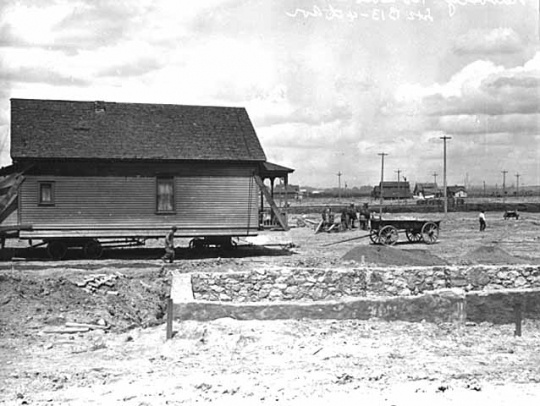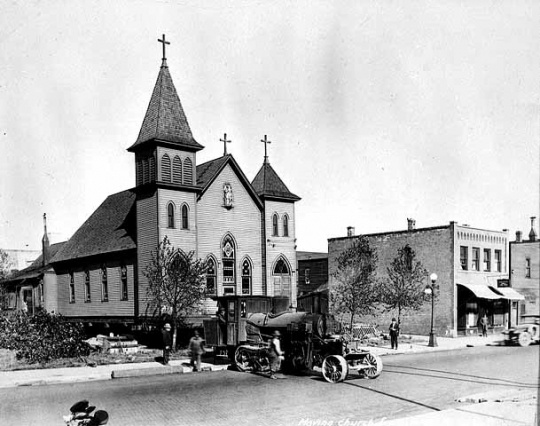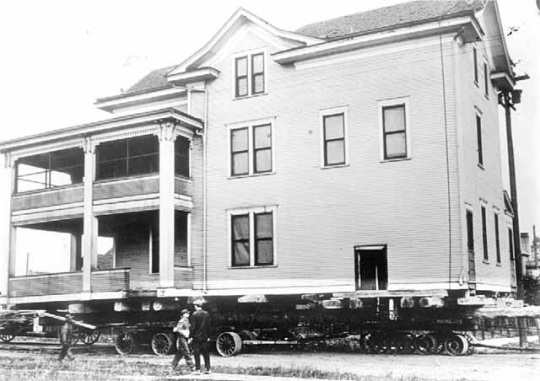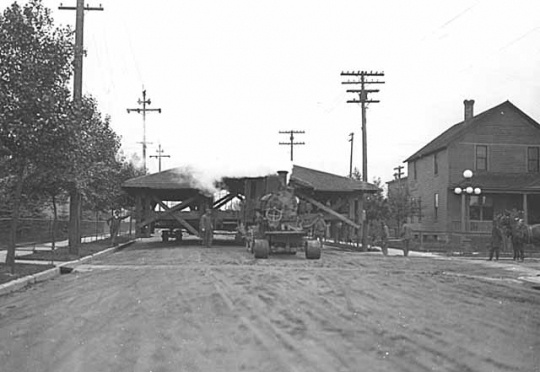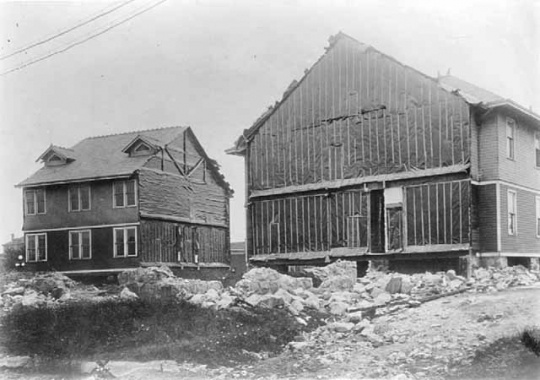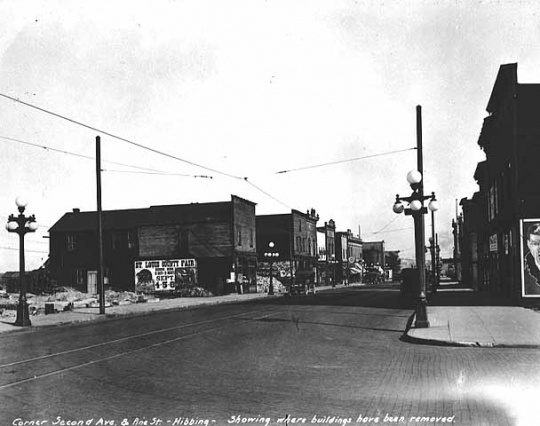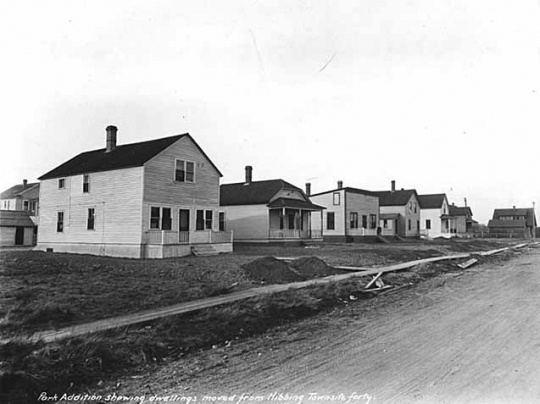From 1919 to 1921, the people of Hibbing moved nearly two hundred structures, including several large buildings, two miles to the south to make way for a growing open pit mine. The Oliver Iron Mining Company wanted the valuable iron ore underneath North Hibbing, and the company funded the use of horses, logs, farm tractors, a steam crawler (a tractor primarily used in the logging industry), steel cables, and human power to relocate the town.
In 1893, Frank Hibbing founded Hibbing because he recognized the rich iron deposits in the area. In its early years, town grew rapidly, as mining companies, miners, real estate developers, and other merchants settled there. Though he lived in Duluth, Frank Hibbing paid close attention to "his" town in its early days, and he suggested that they should build the town further south because of the location of the mine. The people living in Hibbing ignored his advice, and the town grew rapidly in its original location. They kept the valuable iron underneath their homes in mind, however, and nicknamed their town the "richest village in the world".
As demand for steel increased, the Oliver Mining Company's open pit iron mine grew, moving ever closer to the city of Hibbing and its residents. In fact, by the 1910s, the mine surrounded the city on three sides. As late as 1912, the Oliver Mining Company, which was a subsidiary of U.S. Steel, announced that it had no plans to move the town. The company claimed that it would be at least fifteen years before they would need to get the iron under the town. Six years later, however, the company reversed course and declared that the northern part of Hibbing, which contained many of its homes and businesses, had to be moved. The town council and Mayor Victor Power agreed, and in 1918 they accepted a proposal from the company to build a new downtown for Hibbing south of the city.
Hibbing's leaders decided to move the town to Alice, a small community incorporated less than a decade before. Alice was two miles south of Hibbing, and it had plenty of land available for purchase. During and immediately before the move, the Oliver Mining Company funded the construction of new buildings and services in the new area. It helped pay for sewage and electric lines to go to the relocated town, and it also built the Androy Hotel, City Hall, and a new high school.
Using horses, farm tractors, and a steam crawler provided by the mining company, the townspeople moved 188 buildings. The buildings ranged in size from small family homes to the large Colonial Hotel. To move all of the buildings, workers placed logs underneath the structures and secured them with steel cables. They then rolled the buildings to their new locations on specially constructed wooden "rails." If a building was too large, they cut it into two or three pieces and moved each piece separately. If it was too tall, they removed the chimney or stood on the roof with a long stick to lift up the electrical lines.
In the years after the move, the people of Hibbing constructed legends about it. In some accounts, families continued to live in the houses as they moved. In one story, a woman went into labor at the old address and gave birth to the child at the new one. A story with at least a kernel of truth to it is the frequently told one about people returning to town after a long absence. Often, these people would get lost in the new Hibbing. The movers did not rebuild Hibbing exactly the same as it had always been, and the town looked completely different in its new location.
While the moving of Hibbing succeeded in dramatically shifting the focal point of the town, houses and other buildings remained close to what became known as North Hibbing. In 1935, the mining company decided that they needed to mine that land as well. At that point, they did not attempt to move the remaining houses. Instead, they tore them down, paying their owners just a fraction of their value.











